Top 8 Ways to Disable Notifications on Windows 11 (and 3 Tips)
Notifications are a great tool for productivity, but they can sometimes be distracting. Whether you want to disable notifications entirely or for selected apps, this page is what you need. We'll also look at how to automatically disable and enable notifications using Focus Assist.
Also, if the Settings app doesn't work for you, you can use tools like Command Prompt, Registry Editor, and Group Policy Editor for a geekier way to disable notifications. Check out the tutorial below to learn 7 ways to disable notifications on Windows 11.
Why should you disable notifications on Windows 11?
Disabling notifications has its various advantages, some of which are listed below. However, keep in mind that disabling notifications for important apps may cause you to miss important messages and alerts that may be critical to your PC's performance or work. Otherwise, you can enjoy the following privileges by disabling notifications.
- Avoid distractions
- Ignore promotional notifications
- Avoid interruptions during work or gaming
- Keep your desktop simple
- Take a break from social media
- Avoid clickbait
- Avoid ads
and more. Essentially, turning off your notifications will give you a break from all the unimportant messages that apps tend to send you to get your attention.
How to Disable Notifications on Windows 11
Here’s how to disable notifications on Windows 11. You can disable notifications in 3 ways; directly from notifications, temporarily or permanently. Follow one of the following tutorials based on your current needs and requirements.
Method 1: Use Settings to disable all notifications on Windows 11
Press the Windows ikeyboard and click Notifications on the right.
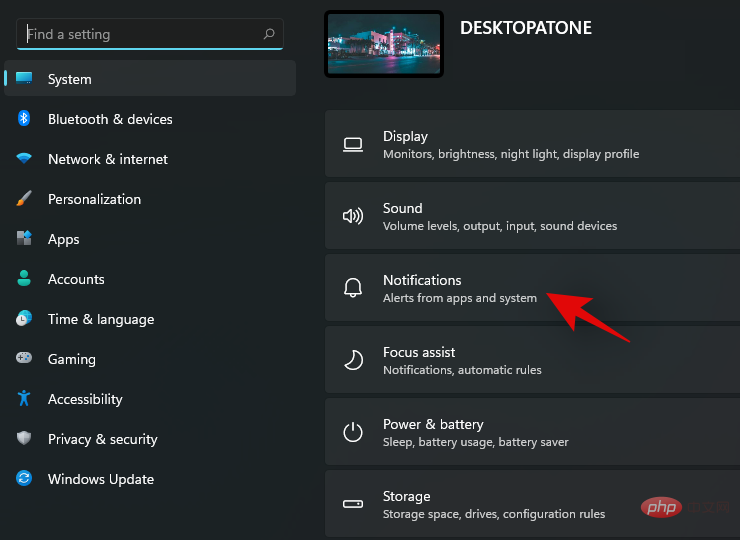
Now turn off the toggle for "Notifications" at the top.

That's it! All notifications will now be turned off on your desktop system.
Method 2: Disable all notifications for an app using Notification Center
You can disable notifications for the app in question using the current notification itself. Let's take a look at the process.
Click the date widget in the lower right corner of the taskbar to open Notification Center (along with Calendar) in a pop-up window.
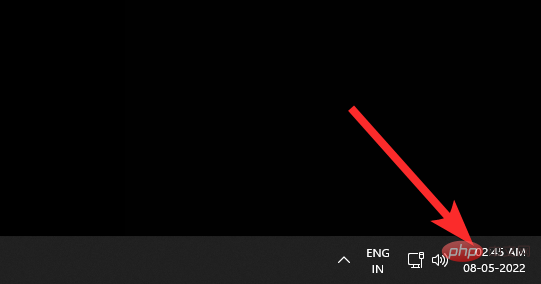
Now, find the notifications of the app for which you want to disable notifications. Once found, click on the three-dot menu icon.
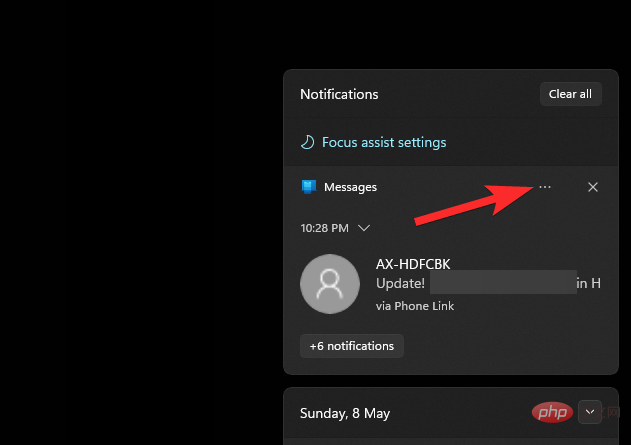
Now click on “Turn off all notifications for [ABCD] app” where [ABCD] is the name of your app. (The messaging app in the example below.)
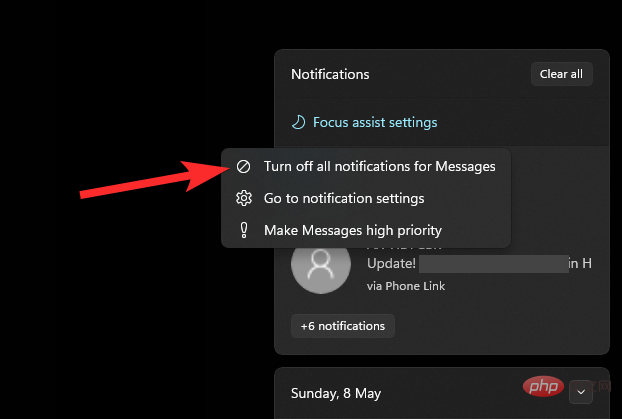
That’s it! All notifications for the relevant app will now be disabled on your system.
Method 3: Disable notifications for selected apps using Settings
You can also selectively turn off notifications for selected apps using the following tutorial.
Press Windows i on your keyboard and click Notifications on the right.

You will now have on-screen toggles for all your installed apps. Turning off the toggle for an associated app will now disable its notifications.
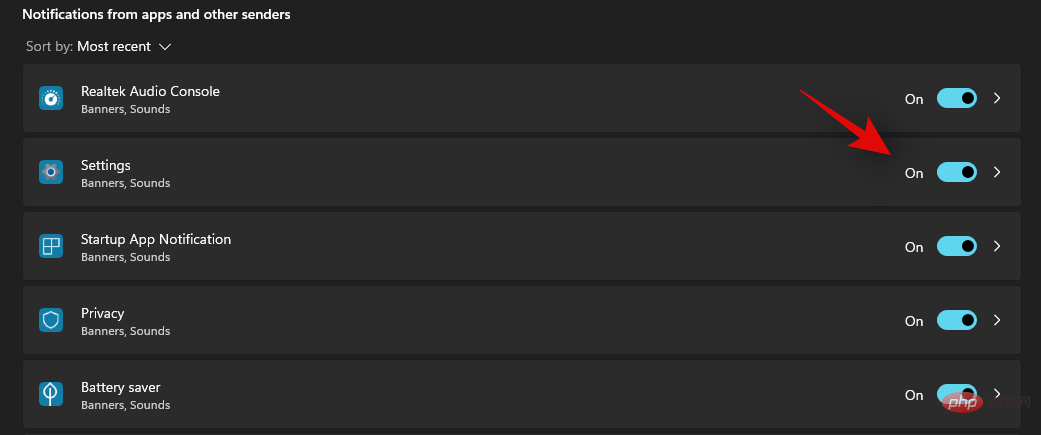
Notifications for the selected app will now be disabled.
Method 4: How to Temporarily Disable Notifications Using Focus Assist
You can also use the following method to temporarily disable notifications on your system. We recommend that you try one of the following Focus Assist methods to temporarily disable notifications, as permanently disabling notifications may cause you to miss important messages that may be related to your PC's performance, health, security, or privacy. Use one of the following methods that best suits your needs.
Turn on focus assist
Press Windows i on your keyboard to open the Settings app. Now make sure System is selected on the left and click Notifications on the right.

Click "Focus Assist".

Now click and select the type of "Focus Mode" you want to use.
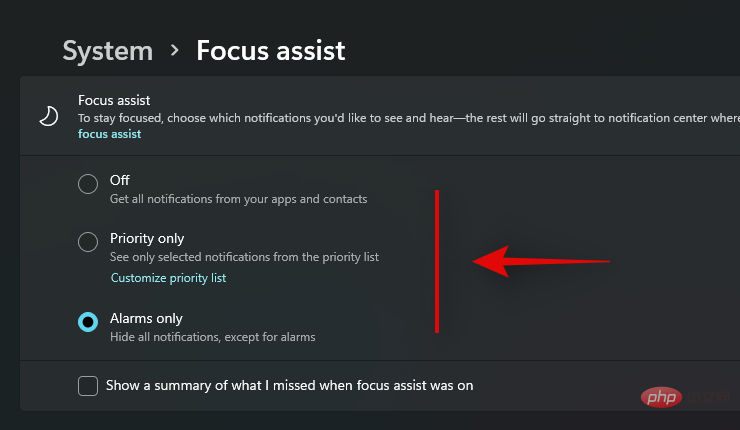
- Off: If this option is selected, focus mode is not used.
- Priority only: Select this focus mode to define a custom priority list for your application. Windows will only send you notifications for this list of apps, and all other notifications will be muted on your PC.
- Alerts only: This option will only notify you of alerts on your system. All other notifications will be muted.
If you selected "Priority Only", follow the follow-up tutorial below, if not, close the Settings app.
That's it! The selected focus assist should now be turned on on your system. You won't receive any notifications until you turn on this mode, and all notifications will be stored in the Action Center.
Create a priority list in Focus Assist
If you select Priority Only, you can use the following tutorial to create a custom app list. When focus mode "Priority Only" is turned on, you will only receive notifications from these apps and all other notifications will be muted on your system.
Click "Customize Priority List" under "Priority Only".
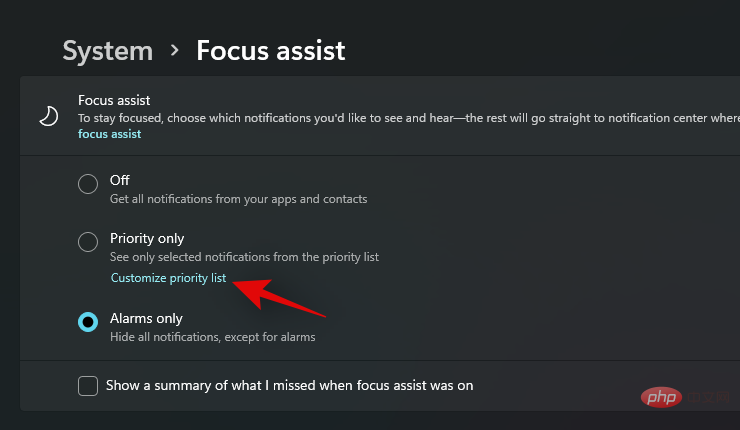
Now, if you wish to receive notifications for alerts, calls (VOIP), alerts, and texts, check the options below.
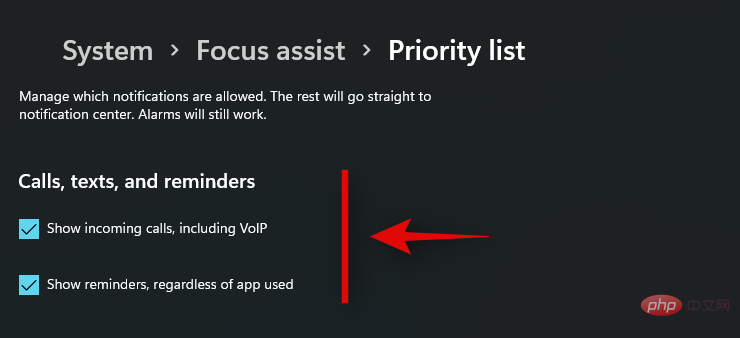
- Shows incoming calls, including VOIP
- Shows alerts regardless of application
If you wish to receive For notifications from pinned contacts, check the box "Show notifications from pinned contacts on the taskbar." This option is only available for apps that support Microsoft's People contacts app. This includes apps like Skype, Mail, Messaging, and more.
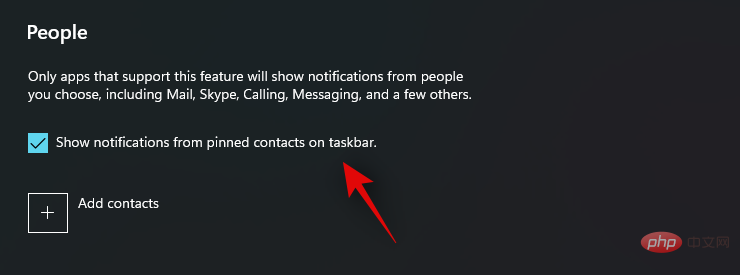
Tip: You can also click Add Contact to create a custom contact list to allow through Focus Assist.
Now click on "Add Application" under Applications.

Click and select the apps you want to add to the priority list.
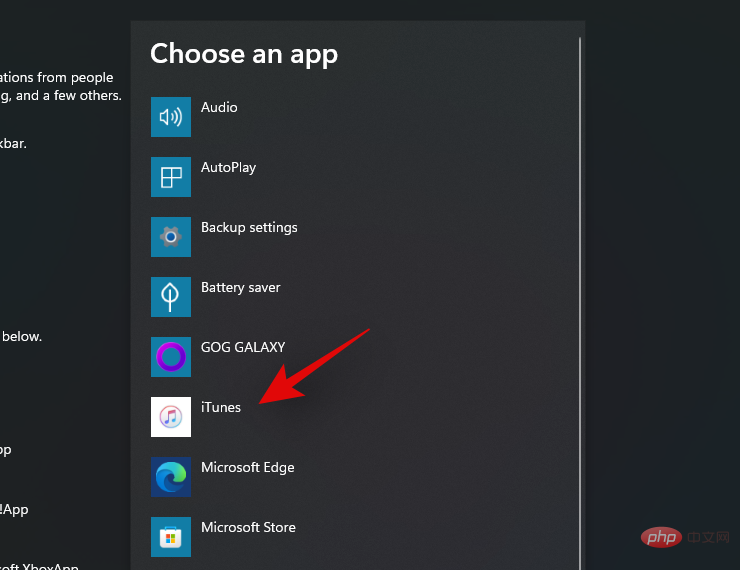
Repeat the above steps for all necessary applications.
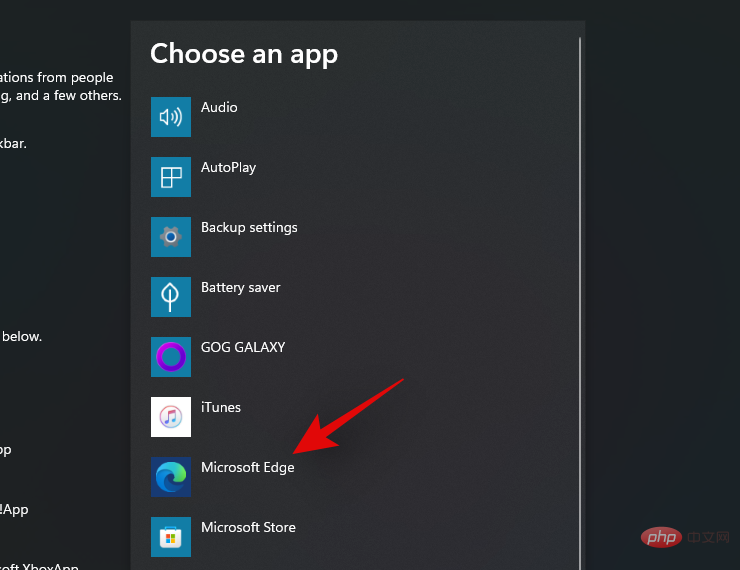
#You can now close the Settings app and your custom priority list will be automatically saved. You will now only receive notifications from selected apps.
Customize Focus Assist
You can also customize Focus Assist using the following options. You can automatically turn on Focus Assist schedules or turn on or off automation rules for Focus Assist based on your selection. Use one of the following tutorials according to your choice.
Automatically enable and disable Focus Assist
You can use the following tutorial to automatically turn Focus Assist on and off on a schedule. This is useful for working systems where you don't have to manually turn on Focus Assist every day.
Press Windows i on your keyboard to open the Settings app and click Notifications.

Now click on “Focus Assist”.

Click "During these times".

Turn on the toggle switch at the top of the screen.
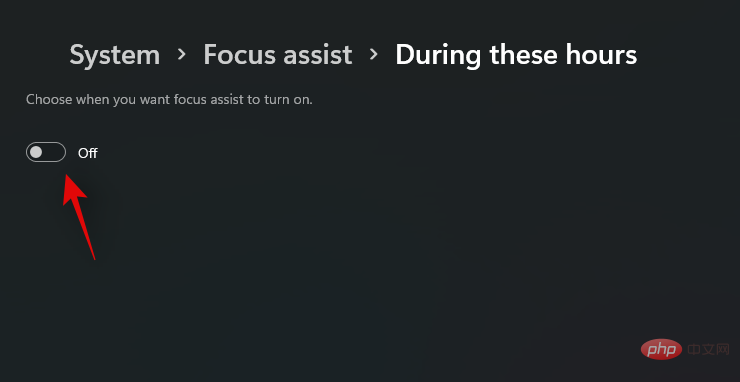
Select the start time of focus assist timing under "Start time".
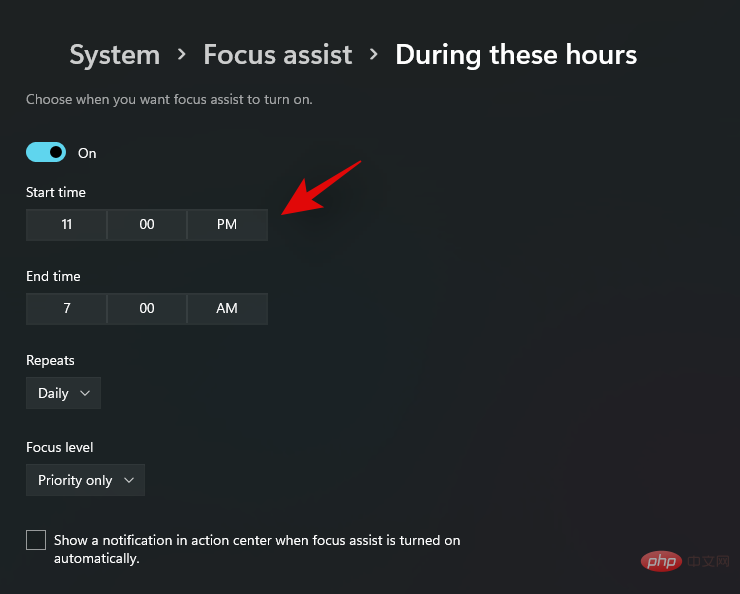
Select your end time under "End time".
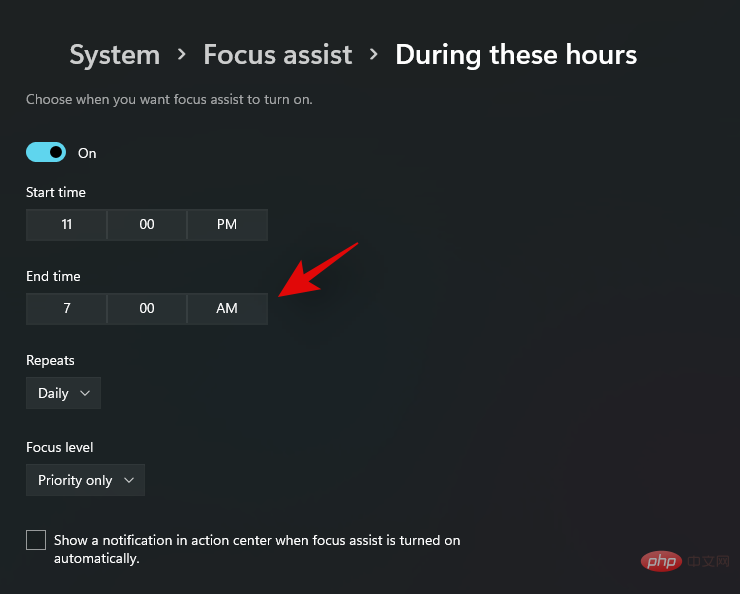
Now select the frequency of your Focus Assist schedule by clicking the drop-down arrow.
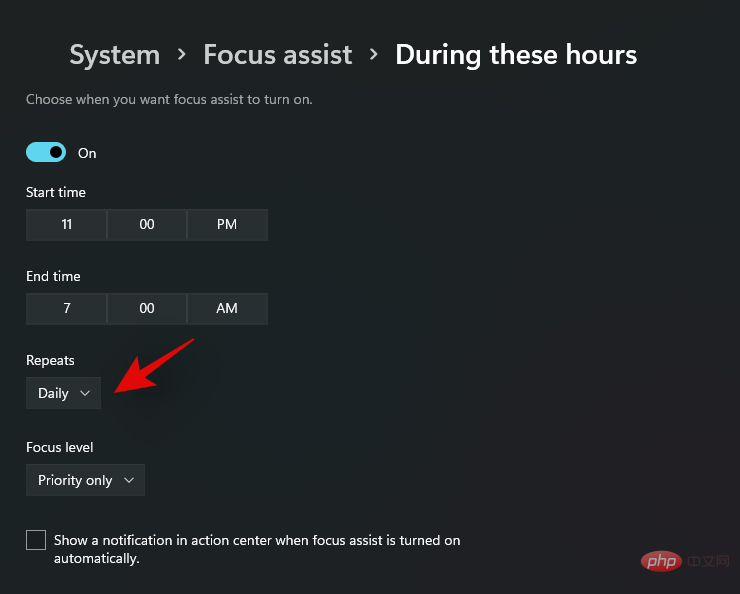
Select the Focus Levels you want to enable and disable automatically.
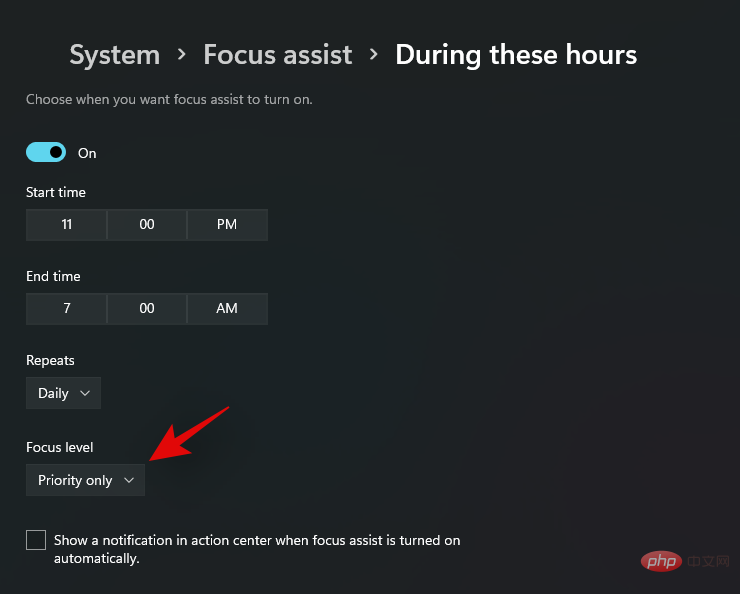
Finally, if you want to be notified when Focus Assist is turned on and off on a schedule, check the "Show notifications in Action Center automatically when Focus Assist is turned on" box.
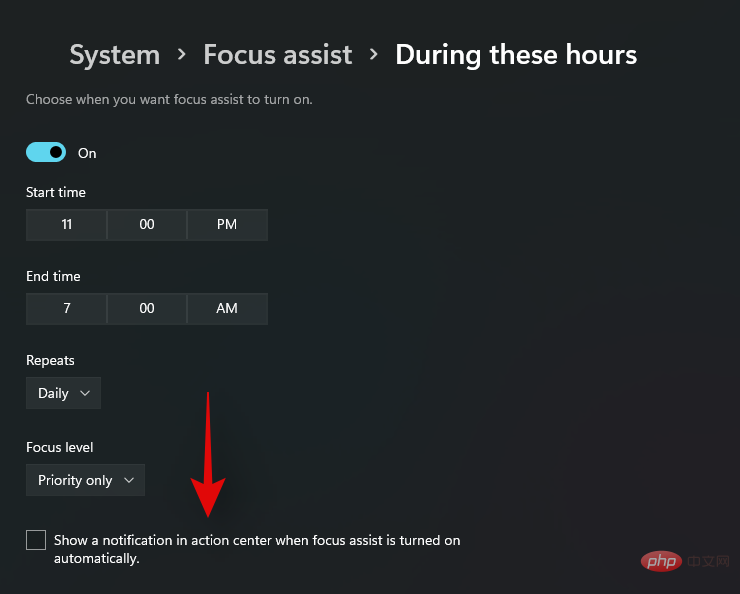
That's it! Focus Assist will now automatically enable and disable on your system according to a set schedule.
Edit Focus Assist Automation Rules
Focus Assist also has certain automation options that help you manage notifications when your device is connected to certain hardware or performs certain actions on the system. You can use the tutorial below to turn these automation rules on or off.
Press Windows i on your keyboard to launch the Settings app and select Notifications on the right.

Now click and select "Focus Assist".

You can now turn the following options on or off according to your preference.
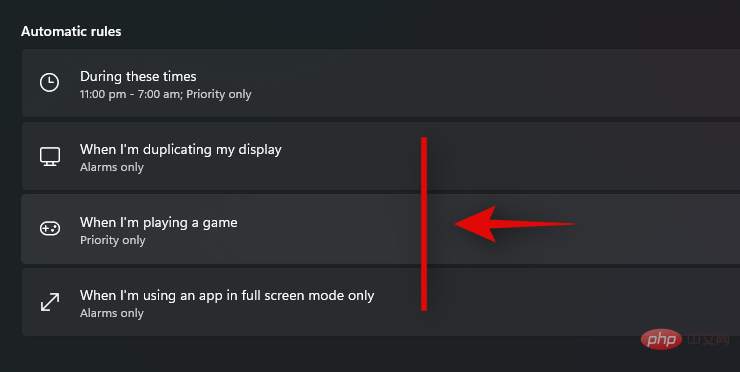
- During these times: You can use this toggle to activate and deactivate Focus Assist on a scheduled basis. Use the tutorial above to set up your schedule.
- When I duplicate my monitor: Turn on this switch to automatically turn on focus assist (alerts only) when you connect to an external monitor. This will help maintain privacy and eliminate personal messages delivered through notifications when connected to a public display.
- When I play a game: This will prevent notifications from showing on the screen while you are playing a game to prevent interruptions.
- When I use the app in full screen mode only: This turns on focus mode when you use the app in full screen mode. This will help avoid interruptions while watching movies, TV shows, etc.
That's it! You will now customize automation rules for your Focus Assist mode in Windows 11.
Method 5: Disable notifications using Command Prompt (CMD)
You can also disable notifications through Command Prompt. Well, not quite, since you can only get rid of Action Center using this method. Action Center will be disabled using the following command, which will prevent you from receiving any kind of notifications. This may be useful if you currently cannot access your desktop or manage it remotely. Follow the tutorial below to get started.
5.1 – Disable Action Center
Press Windows Skeyboard and search for CMD. Once it appears in your search results, click "Run as administrator."
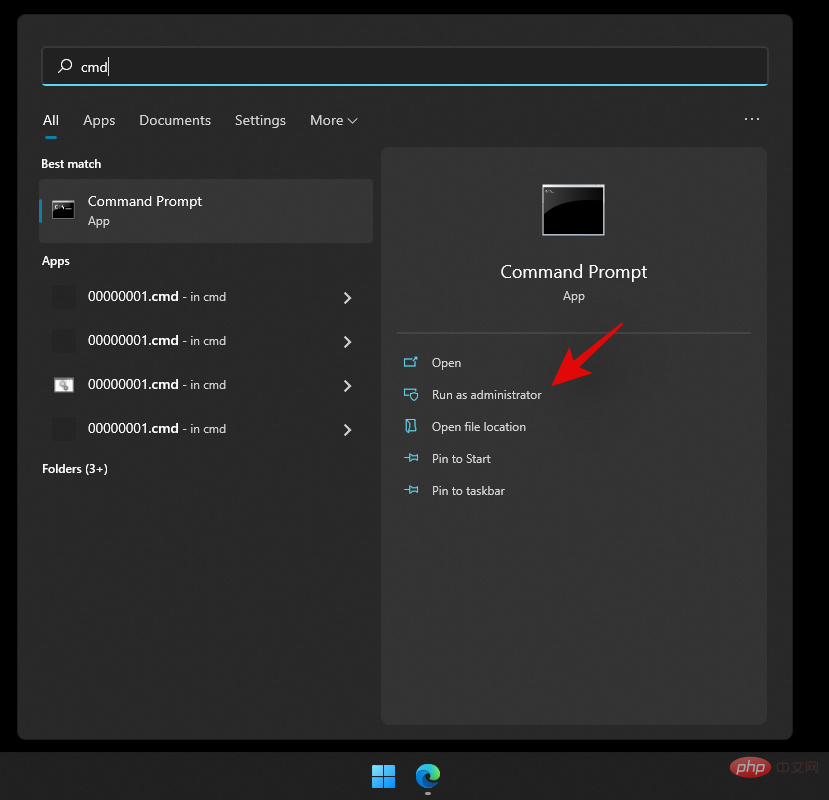
Now enter the following command and press “Enter” on your keyboard.
reg add HKLM\Software\Microsoft\Windows\CurrentVersion\Policies\Explorer /v HideSCAHealth /t REG_DWORD /d 0x1
A registry value will now be created on your system which will disable the Action Center on your system.
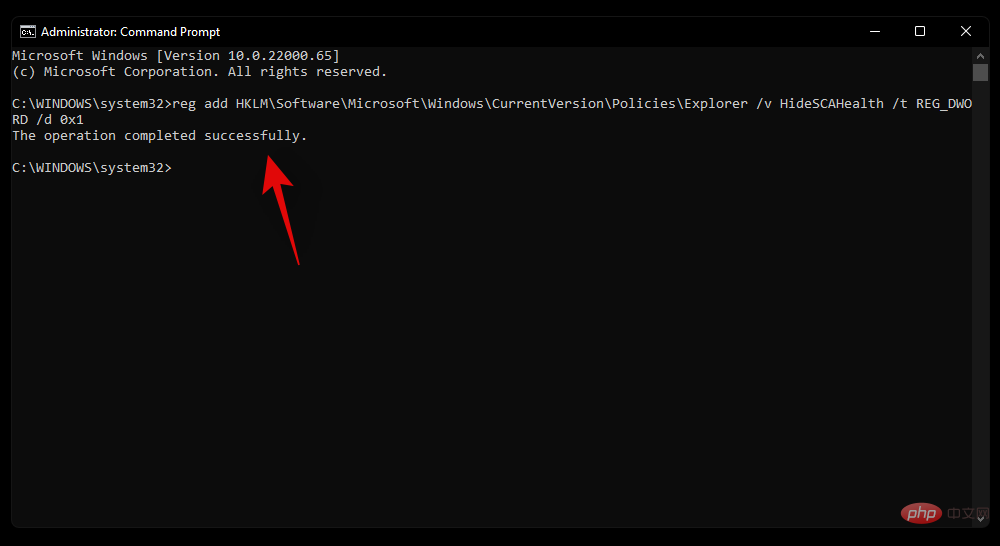
If previous notifications appear in your Action Center, you can clear them. From now on, any future notifications will no longer appear in your Action Center.
5.2 – Re-enabling Action Center (if needed in the future)
Use the following tutorial to re-enable Action Center on your system.
Press the Windows Skeyboard to open Windows Search. Search for "Regedit" and click and launch the app once it appears in your search results.
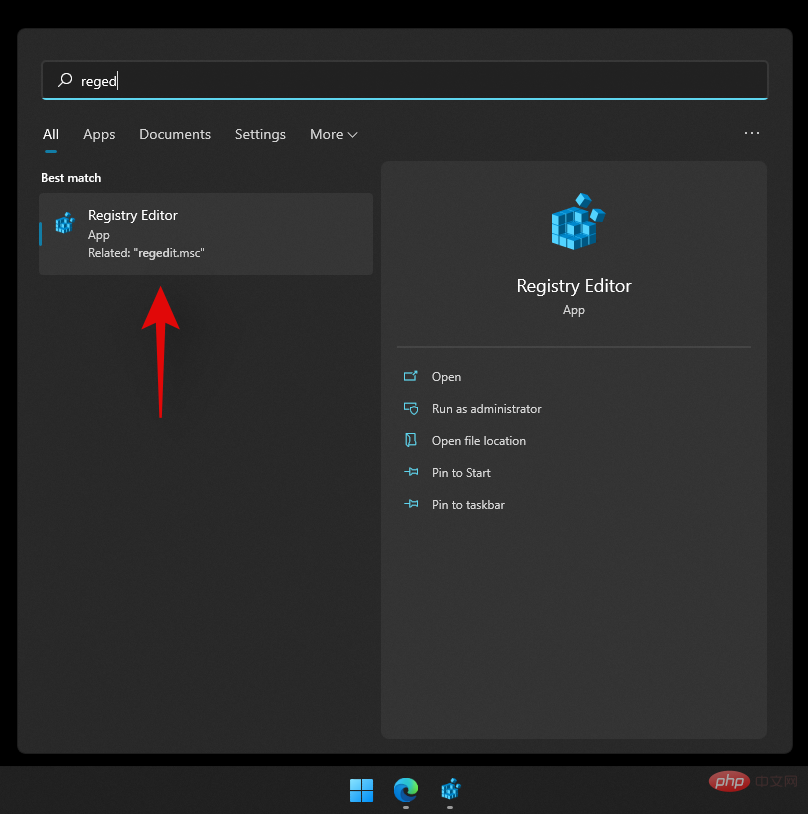
Now navigate to the following location below.
Computer\HKEY_LOCAL_MACHINE\SOFTWARE\Microsoft\Windows\CurrentVersion\Policies\Explorer

Look for "HideSCAHealth" on your right and double-click it.

Change the value to 0 and reboot the system permanently.
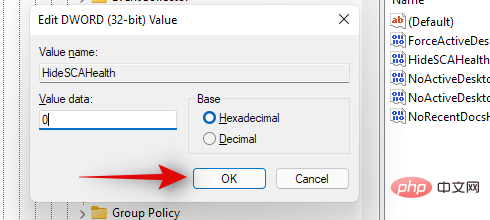
Action Center should now be enabled on your Windows 11 system.
Method 6: Use Registry Editor to disable notifications
You can also create a registry value to manually disable Action Center on your system.
Press Windows S and search for "Regedit". Once the app appears in your search results, click and launch the app.

Now navigate to the following directory.
HKEY_CURRENT_USER\Software\Microsoft\Windows\CurrentVersion\PushNotifications

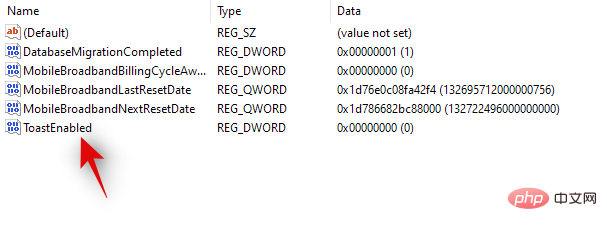
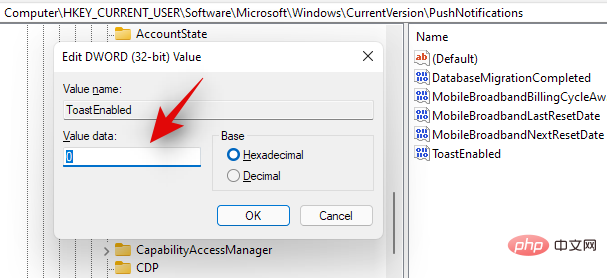
- 0: Enter "0" to disable notifications.
- 1: Enter "1" to enable notifications.
Windows S keyboard and search for "gpedit.msc".

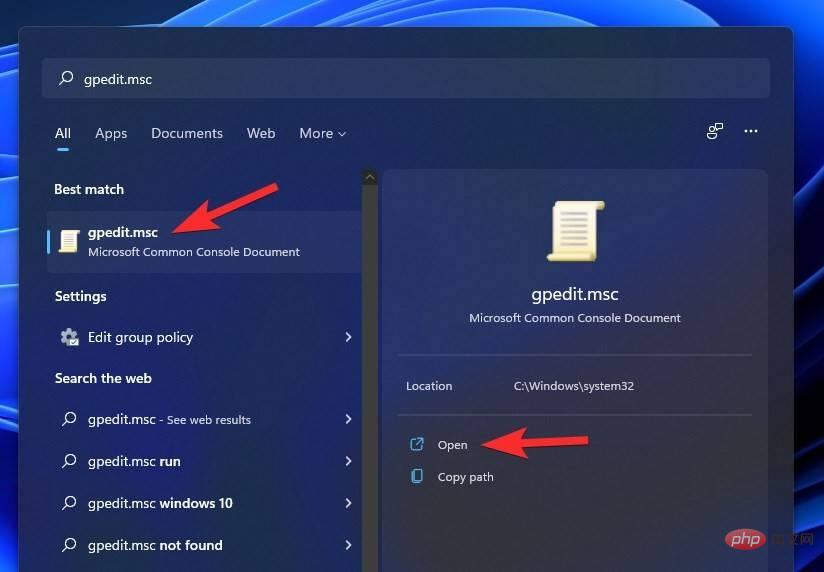
User Configuration/Administrative Templates/Start Menu and Taskbar
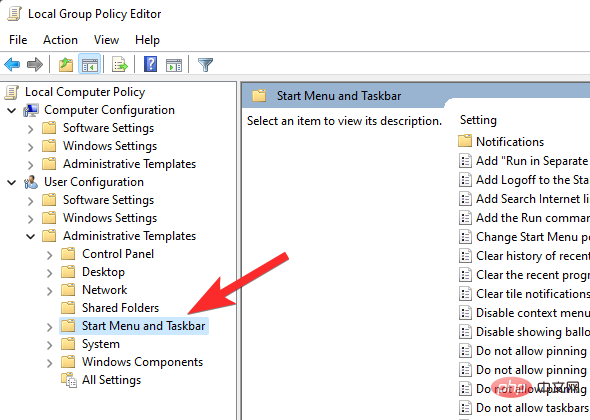
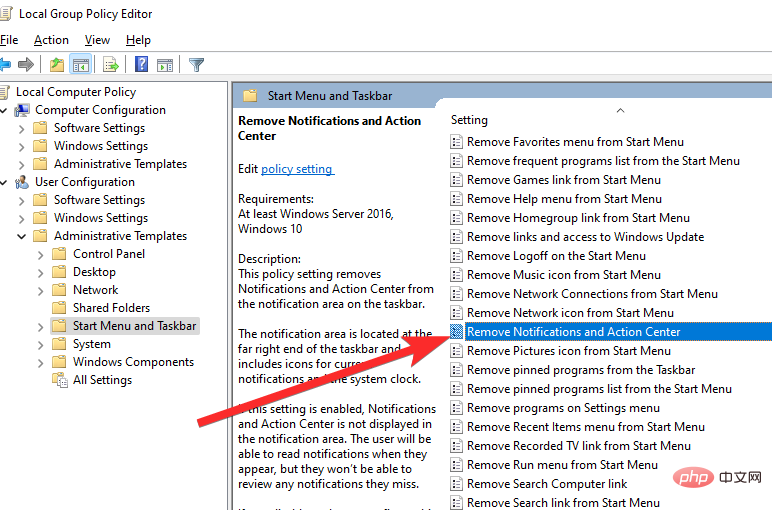
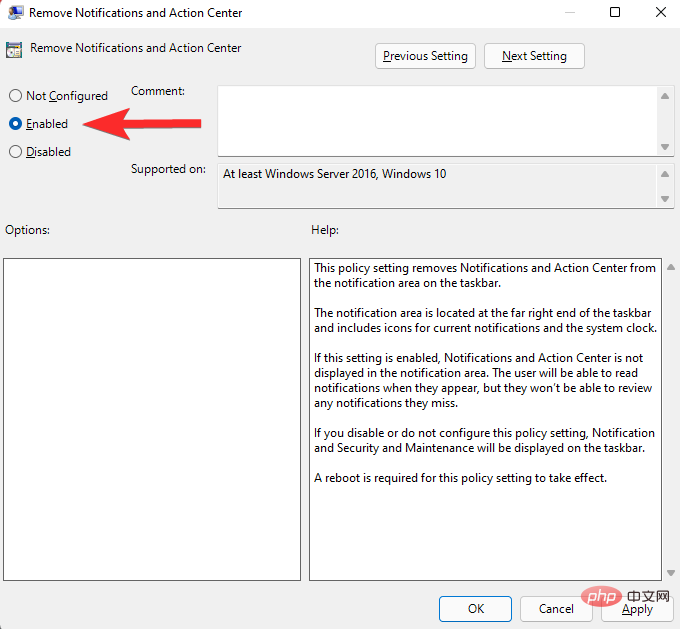
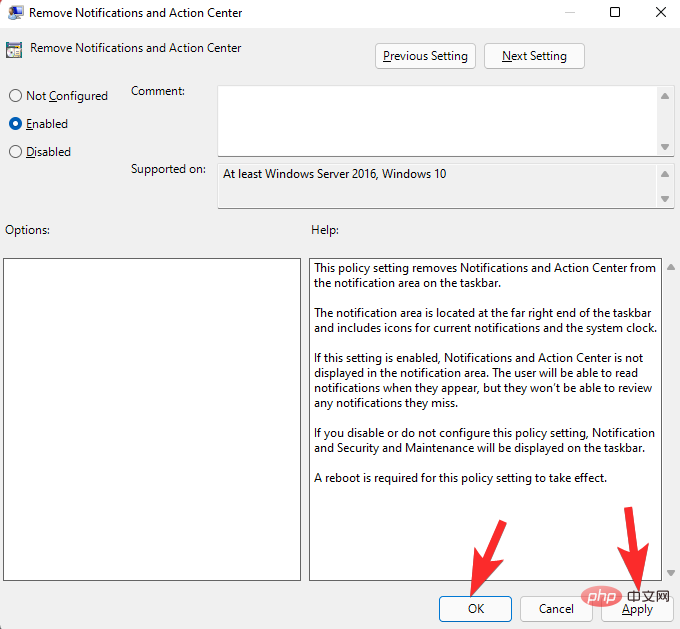
Windows i to open the Settings app and click "Notifications" on the right.


Tip #1: Turn off notification area icons
Launching an app running in the background can introduce the sometimes annoying notification tray icon. Managing your notification tray icons does have some changes in Windows 11, and you can turn them off here if you want.
PressWindows iThe keyboard that best suits your current needs. Click "Personalize" on the left.
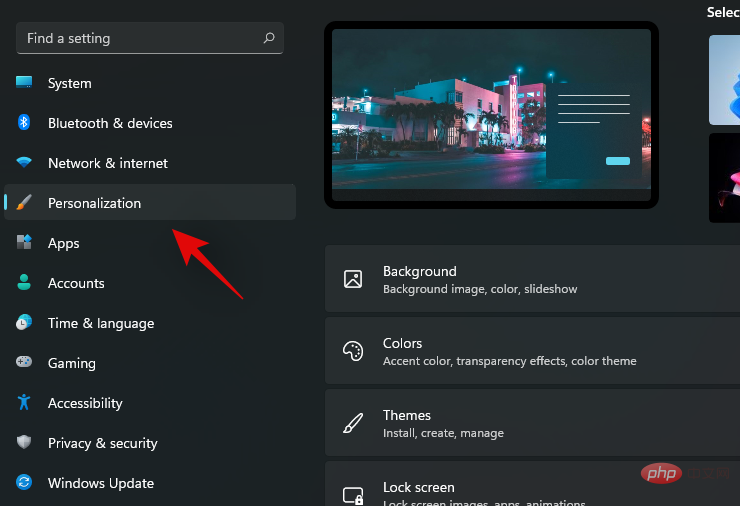
Now click on “Taskbar”.
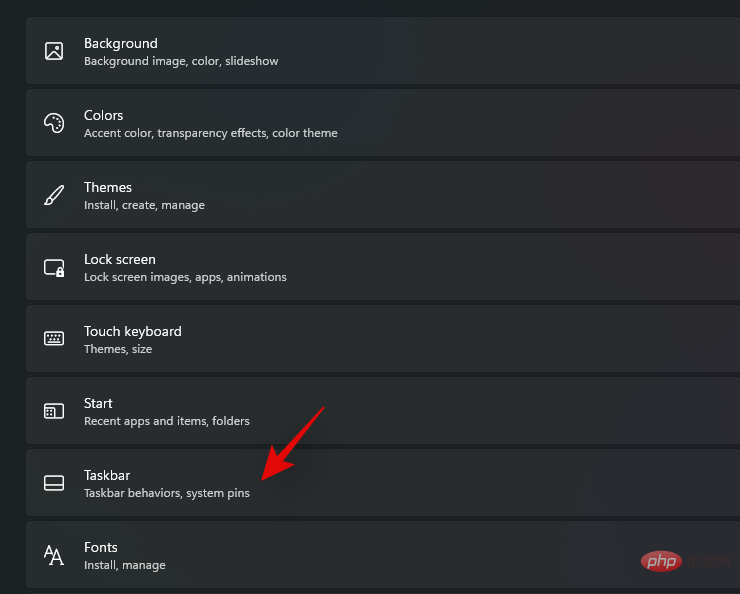
Click "Taskbar Corner Overflow".
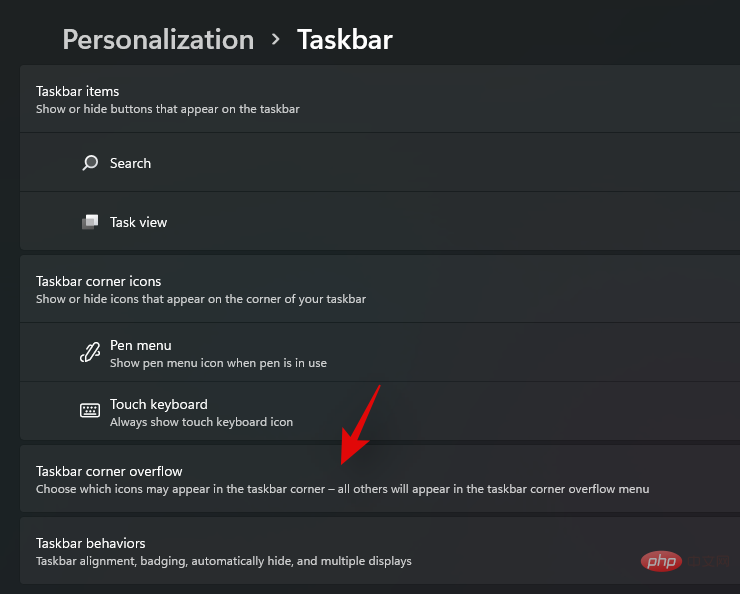
Now turn off the toggle for the apps you don’t want to show up in the notification tray.

That's it! The selected switch will no longer appear in your taskbar.
Tip #2: Disable notification icon badges in the taskbar
You can also use this tutorial to disable notification badges that appear in taskbar apps. When disabled, you won't receive the badge in the taskbar, which can be distracting.
Badges help you keep up to date with the current number of unread messages in the relevant application. However, if you receive a lot of promotional messages, this can sometimes cause anxiety or be distracting.
After completing this tutorial, you should no longer receive notification badges in the taskbar in Windows 11.
Tip #3: Which apps always allow notifications?
You can also use the following tutorial to permanently disable notifications on your system. We don't recommend permanently disabling your notifications, but if you plan to do so, we recommend allowing the following apps to pass through to receive important notifications.
- Settings
- Privacy
- Security and Maintenance
- Storage Settings
- Backup Settings
- Power Saving
Also, if you have applications to manage your hardware components, such as Realtek Audio, Dolby Audio or more, then we recommend that you allow them to continue receiving important notifications as well. Now, you can disable notifications permanently on Windows 11 by following one of the following tutorials that best suits your current needs and requirements.
The above is the detailed content of Top 8 Ways to Disable Notifications on Windows 11 (and 3 Tips). For more information, please follow other related articles on the PHP Chinese website!

Hot AI Tools

Undresser.AI Undress
AI-powered app for creating realistic nude photos

AI Clothes Remover
Online AI tool for removing clothes from photos.

Undress AI Tool
Undress images for free

Clothoff.io
AI clothes remover

AI Hentai Generator
Generate AI Hentai for free.

Hot Article

Hot Tools

Notepad++7.3.1
Easy-to-use and free code editor

SublimeText3 Chinese version
Chinese version, very easy to use

Zend Studio 13.0.1
Powerful PHP integrated development environment

Dreamweaver CS6
Visual web development tools

SublimeText3 Mac version
God-level code editing software (SublimeText3)

Hot Topics
 How to disable taskbar thumbnail preview in Win11? Turn off the taskbar icon display thumbnail technique by moving the mouse
Feb 29, 2024 pm 03:20 PM
How to disable taskbar thumbnail preview in Win11? Turn off the taskbar icon display thumbnail technique by moving the mouse
Feb 29, 2024 pm 03:20 PM
This article will introduce how to turn off the thumbnail function displayed when the mouse moves the taskbar icon in Win11 system. This feature is turned on by default and displays a thumbnail of the application's current window when the user hovers the mouse pointer over an application icon on the taskbar. However, some users may find this feature less useful or disruptive to their experience and want to turn it off. Taskbar thumbnails can be fun, but they can also be distracting or annoying. Considering how often you hover over this area, you may have inadvertently closed important windows a few times. Another drawback is that it uses more system resources, so if you've been looking for a way to be more resource efficient, we'll show you how to disable it. but
 What should I do if the Win7 taskbar does not display the icon? How to solve the problem of the computer taskbar icon disappearing
Jun 09, 2024 pm 01:49 PM
What should I do if the Win7 taskbar does not display the icon? How to solve the problem of the computer taskbar icon disappearing
Jun 09, 2024 pm 01:49 PM
Recently, many users using Win7 system have found that the icons in the taskbar suddenly disappeared, which makes the operation very inconvenient and they do not know how to solve the problem. This article will introduce to you how to solve the problem of disappearing taskbar icons in Win7 system. Bar! Cause Analysis When encountering such a situation, there are generally two situations: one is that the taskbar on the computer does not really disappear, but is just hidden, and the other is that the taskbar does disappear. Method 1: 1. There is a situation that you need to confirm first, that is, when the mouse is placed at the bottom of the screen, the taskbar will be displayed. You can directly click the mouse on the taskbar and select "Properties". 2. In the dialog box that opens, click & on the "Hide taskbar" option.
 How to reduce the height of the taskbar in win11? Tutorial on resizing the taskbar in Windows 11
Feb 29, 2024 pm 12:37 PM
How to reduce the height of the taskbar in win11? Tutorial on resizing the taskbar in Windows 11
Feb 29, 2024 pm 12:37 PM
When we use win11, we will find that the height of the taskbar is a bit high, which feels a bit unsightly to some users. So how to reduce the height of the win11 taskbar? Users can directly click the Registry Editor under the Start menu, and then find the Advanced folder to operate. Let this site carefully introduce to users how to adjust the taskbar size in Windows 11. How to resize the taskbar in Windows 11 First, we need to open the Registry Editor. You can open the registry editor by clicking the Start menu and entering "regedit" in the search box, or by pressing the Win+R key combination to open the Run function and entering "regedit".
 How to pin the Win11 taskbar
Jan 04, 2024 pm 04:31 PM
How to pin the Win11 taskbar
Jan 04, 2024 pm 04:31 PM
In previous Windows systems, we often used the function of locking the taskbar to avoid misoperation of the taskbar. However, many users found that they could no longer lock the taskbar after updating the win11 system. This is actually because Microsoft has canceled this function. The following is Just follow the editor and take a look. How to lock the taskbar in win11: Answer: Unable to lock. 1. Microsoft has canceled the function of locking the taskbar in the win11 system, so we cannot lock the taskbar now. 2. Generally speaking, we can right-click on the blank space of the taskbar to lock the taskbar. 3. But in win11 system, right-clicking on the blank space of the taskbar only has the taskbar settings option. 4. If we open the taskbar settings, the corresponding taskbar lock cannot be found.
 How to make the Win11 taskbar black? Introduction to how to set the black taskbar in Win11
Apr 22, 2024 pm 06:40 PM
How to make the Win11 taskbar black? Introduction to how to set the black taskbar in Win11
Apr 22, 2024 pm 06:40 PM
Some friends also want the taskbar to turn black after changing the dark wallpaper on their computers, but they don’t know how to do it. Let’s take a look at the specific methods below! 1. Right-click an empty area in the taskbar and select "Taskbar Settings." 2. In the taskbar settings window, find the "Appearance" tab and click it. 3. Under the "Appearance" tab, find the "Taskbar Background" option and click the drop-down menu. 4. Select "Black". 5. Close the "Taskbar Settings" window. Taskbar beautification Xiaozhi Eye Protector is a very easy-to-use win11 transparent taskbar tool. It supports taskbar transparency, taskbar beautification, and multiple styles to beautify the taskbar interface, making your computer interface more beautiful. Xiaozhi Eye Protector Eye Baby (click to download now) Xiaozhi Eye Protection
 Tutorial on how to set up glass effects on the Windows 11 taskbar
Jan 05, 2024 pm 07:07 PM
Tutorial on how to set up glass effects on the Windows 11 taskbar
Jan 05, 2024 pm 07:07 PM
In the win10 system, we can set the transparency effect, frosted glass effect, etc., so can we set the frosted glass effect in the win11 system? In fact, it is possible, but we need to use the functions of third-party software. Let’s follow the editor to take a look at the specific methods. How to set the win11 taskbar glass effect: 1. In the win11 system, we can only set the transparency effect, color and depth mode of the window. 2. Therefore, if you want to set up frosted glass special effects, you need to use third-party software. 3. First download a software called "classicshell" on the Internet. 4. After the download and installation is completed, you only need to open the software, find the "Taskbar" tab, and set the "frosted glass" feature in the appearance.
 How to solve the problem that the win11 taskbar does not respond when clicked/cannot be used
May 09, 2024 pm 06:43 PM
How to solve the problem that the win11 taskbar does not respond when clicked/cannot be used
May 09, 2024 pm 06:43 PM
After upgrading to Windows 11 system, many users encountered the problem that the taskbar cannot be clicked, which has a great impact on life and work. So how to solve it specifically? Let’s take a look below! Method 1 1. First, we press the Ctrl+Shift+Esc shortcut keys on the keyboard to open the Task Manager. 2. Then click File in the upper left corner and select Run New Task. 3. After opening it, enter control and press Enter to enter the control panel. 4. Find the time and area and choose to change the date and time. 5. Change the time to September 4 or later, turn off automatic time synchronization after the setting is completed, and then restart the computer. 6. After restarting, re-enter the time settings and come to the internet time selection.
 How to expand the stacked display of the Win11 taskbar? Tutorial on stacking and expanding the Win11 taskbar
Jan 29, 2024 am 11:33 AM
How to expand the stacked display of the Win11 taskbar? Tutorial on stacking and expanding the Win11 taskbar
Jan 29, 2024 am 11:33 AM
When we use win11 system, we will find that our taskbar windows are merged. Many users don't like this operation very much. So how to expand the win11 taskbar stacking? Users can directly click on the taskbar settings under the right button, and then directly find the taskbar corner overflow option in the right menu to operate. Let this site carefully introduce to users how to expand the win11 taskbar stack. How to expand taskbar stacking in Windows 11 Method 1. 1. Right-click on a blank space on the taskbar and select Taskbar Settings. 3. After clicking the taskbar corner overflow, turn on the switch for the application icon to be displayed. Method two: 1. We need to use a software to achieve this, search, download and install star by ourselves





